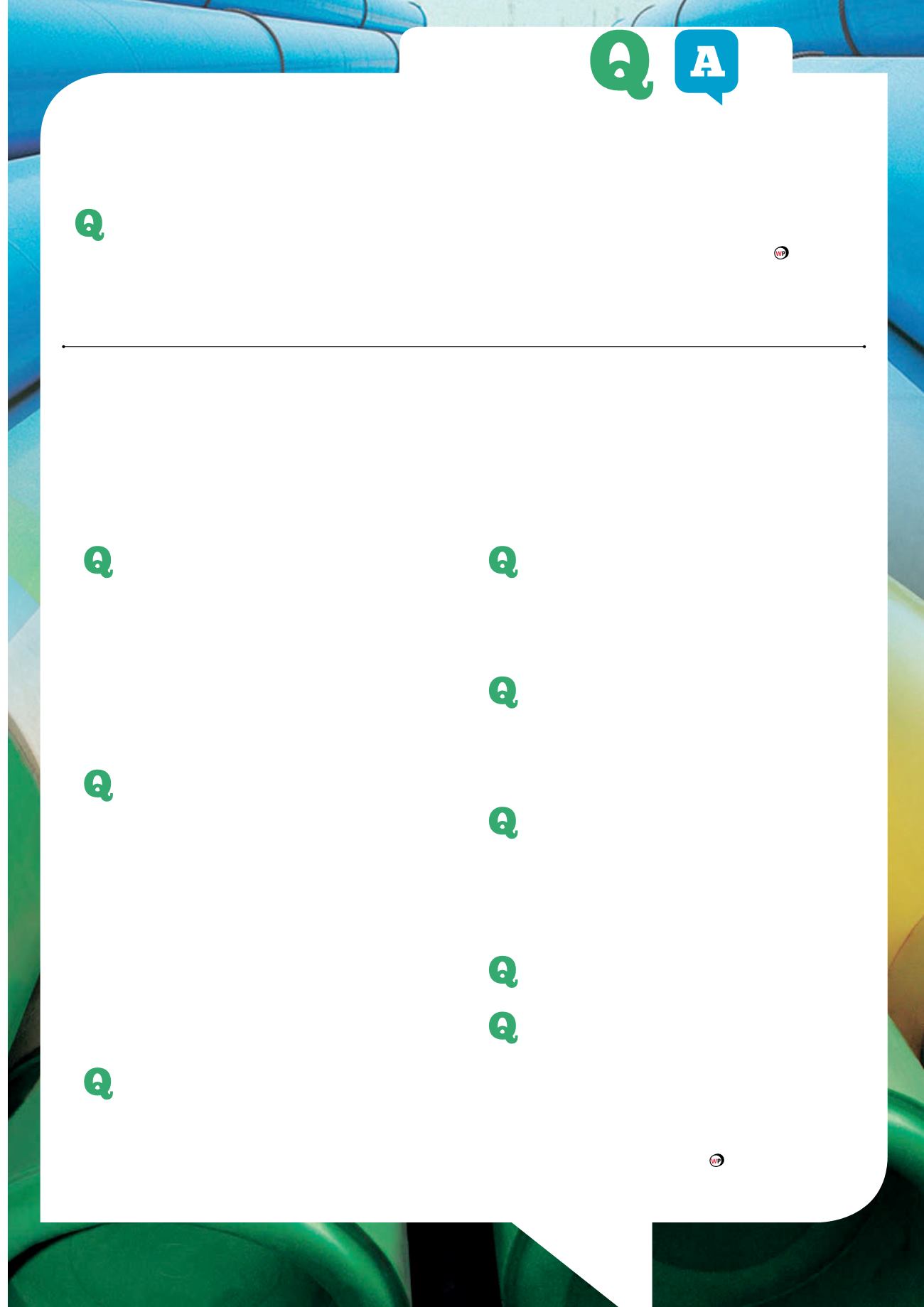
Coatings
&
solvent-free materials are viewed as a very good and
workable intermediate stage development. All coating
manufacturers should be working towards cost-effective
environmentally-friendly coatings.
Which coatings-related events,
seminars and/or standards would
you recommend?
The current, most widely used pipe coating standards, which
Jotun utilises to demonstrate its Jotapipe product performance
and would recommend, are CSA Z245.20-10/ISO 21809 (External
FBE Pipe Coatings for Petroleum & National Gas Transportation
Pipelines), API RP 5L2/ISO 15741 (Internal Flow Coatings for
Non-corrosive Gas Transportation Pipelines), BS 6920/NSF/
ANSI 61/AWWA C210 (Internal Linings for Water Transportation
Pipelines), Transco CW6/EN 10290 (External Coatings for
Pipeline Protection and Rehabilitation), EI 1541 / MIL-Spec PRF
4556F and/or PRF 23236D (Internal Linings for Refined Product
Transportation Pipelines (including Aviation Fuel).
References
1.
Nace.org/Coating Inspector Training Program (CIP) – Level 1 (24/05/2015).
Rainer Grabowski
, Plant
Manager, MÜLHEIM Pipecoatings
GmbH, a subsidiary of EUROPIPE
Group, Germany
Has the way you coat pipes changed
in the last ten years? How?
A particular focus has been on decreasing the coating
temperature required prior to application to minimise
energy consumption.
In addition, new coating systems have been developed
to meet the specific pipeline project requirements
e.g. suitable coating for offshore pipelines requesting
improved collapse resistance. This 3-layer coating system
is applied in combination with steel heat-treatment, at a
minimum application temperature of 210°C.
How would you reassure someone
doubting the efficacy of today’s
pipeline coating systems?
Due to the close co-operation with our main customers
from the pipeline industry, i.e. oil and gas companies
and pipelaying companies, we are well-informed about
the performance of the coated pipes delivered by our
company. We feel confident that the coating systems
that have been applied at our coating yard since more
than 35 years provide an excellent corrosion protection
during the whole service life of pipeline.
The best way for us to create confidence among
end user representatives, engineers or inspectors is a
plant tour in combination with presentation of the final
product quality.
What kinds of problems have led to
coatings failures?
Major coating failures come from poor surface
preparation, failure to comply with coating process
parameters and employment of untrained or
unknowledgeable personnel.
What role does Quality Control have?
What about testing and validation?
Quality control supports production to ensure that product
quality is as per the customer’s requirements. Testing and
validation on a regular basis confirms the product quality at all
stages of the process.
Describe your inspection process.
The inspection and test plan indicates every inspection
point and laboratory testing with their acceptance criteria,
method to be followed and frequencies.
Every sub-process in the coating plant is controlled and all
results are recorded.
What surface preparation is required at
the most basic/at higher functioning
levels?
We only have a high level of surface preparation as this is a key
quality factor in all coating systems.
Blasting, cleaning with high pressure water, washing with
deionised water and application of chemical pre-treatment.
Why do we insulate pipelines?
Pipelines are insulated to avoid steel corrosion.
Are you developing environmentally-
sound coatings?
Environmental developments are as follows:
)
VOC emission reduction during internal coating
application.
)
Minimising energy required for pipe coatings.
)
Alternative pre-treatment materials.
53


